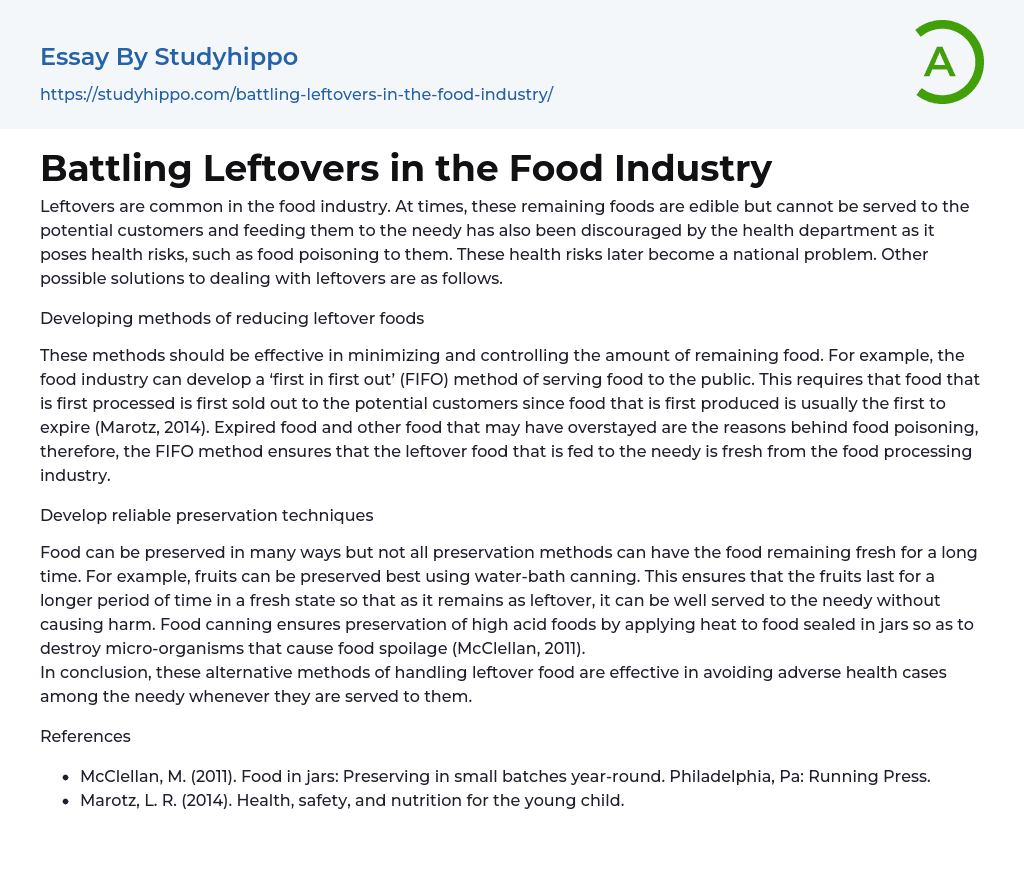Leftovers are common in the food industry. At times, these remaining foods are edible but cannot be served to the potential customers and feeding them to the needy has also been discouraged by the health department as it poses health risks, such as food poisoning to them. These health risks later become a national problem. Other possible solutions to dealing with leftovers are as follows.
Developing methods of reducing leftover foods
These methods should be effective in minimizing and controlling the amount of remaining food. For example, the food industry can develop a ‘first in first out’ (FIFO) method of serving food to the public. This requires that food that is first processed is first sold out to the potential customers since food that is first produced is usually the first to expire (Marotz, 2014). Expired food and other f
...ood that may have overstayed are the reasons behind food poisoning, therefore, the FIFO method ensures that the leftover food that is fed to the needy is fresh from the food processing industry.
Develop reliable preservation techniques
Food can be preserved in many ways but not all preservation methods can have the food remaining fresh for a long time. For example, fruits can be preserved best using water-bath canning. This ensures that the fruits last for a longer period of time in a fresh state so that as it remains as leftover, it can be well served to the needy without causing harm. Food canning ensures preservation of high acid foods by applying heat to food sealed in jars so as to destroy micro-organisms that cause food spoilage (McClellan, 2011).
In conclusion, these alternative methods of handling leftover food are effective
in avoiding adverse health cases among the needy whenever they are served to them.
References
- McClellan, M. (2011). Food in jars: Preserving in small batches year-round. Philadelphia, Pa: Running Press.
- Marotz, L. R. (2014). Health, safety, and nutrition for the young child.
- Beef essays
- Beer essays
- Beverages essays
- Bread essays
- Burger essays
- Cake essays
- Coconut essays
- Coffee essays
- Cooking essays
- Crowd essays
- Cuisines essays
- Dairy essays
- Desserts essays
- Dinner essays
- Drink essays
- Fast Food essays
- Favorite Food essays
- Food Safety essays
- Food Security essays
- Food Waste essays
- Fruit essays
- Ginger essays
- Hamburger essays
- Ice Cream essays
- Juice essays
- Lemon essays
- Meal essays
- Meat essays
- Oreo essays
- Organic Food essays
- Pizza essays
- Rice essays
- Sainsbury essays
- Sugar essays
- Taste essays
- Tea essays
- Wine essays




